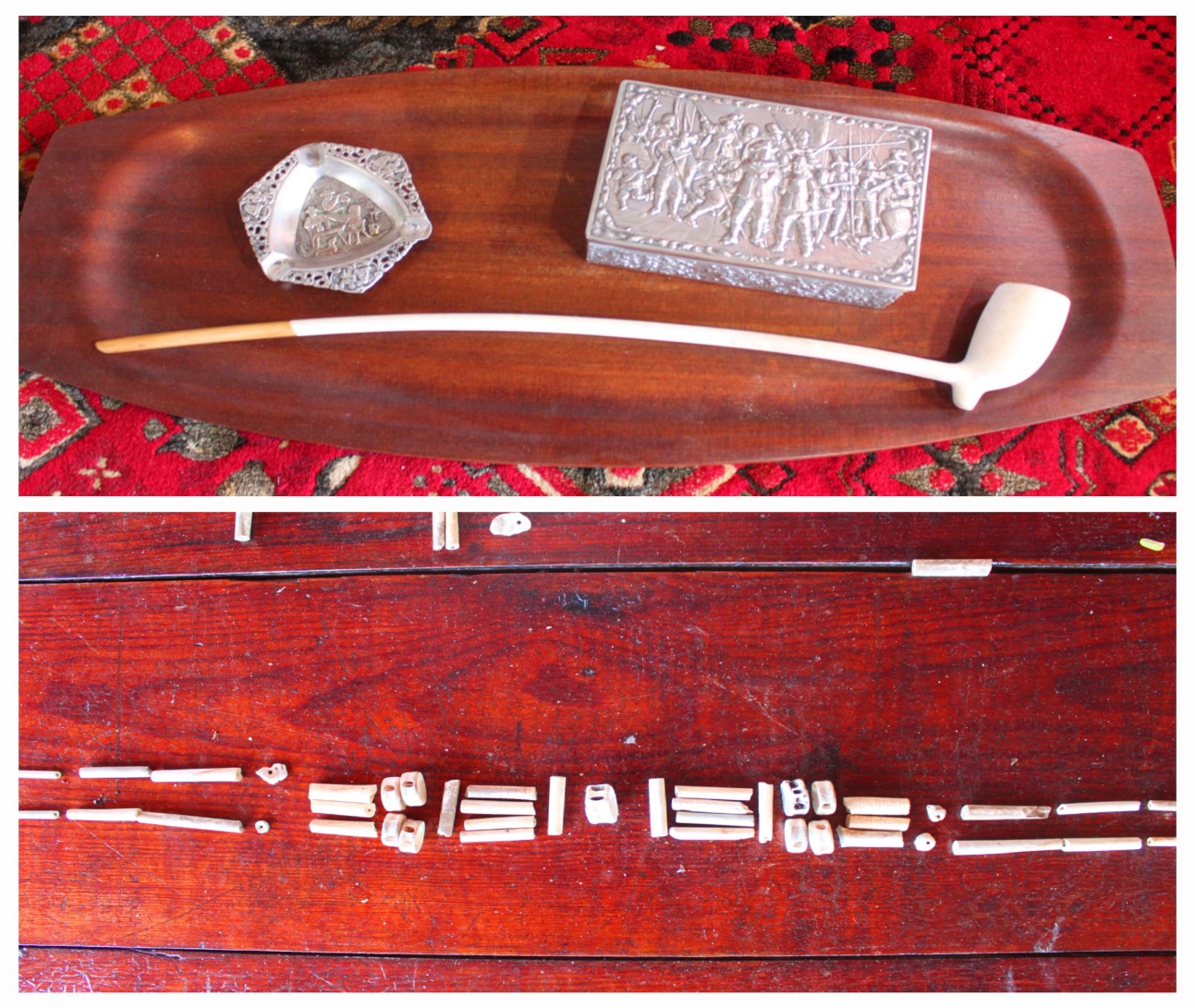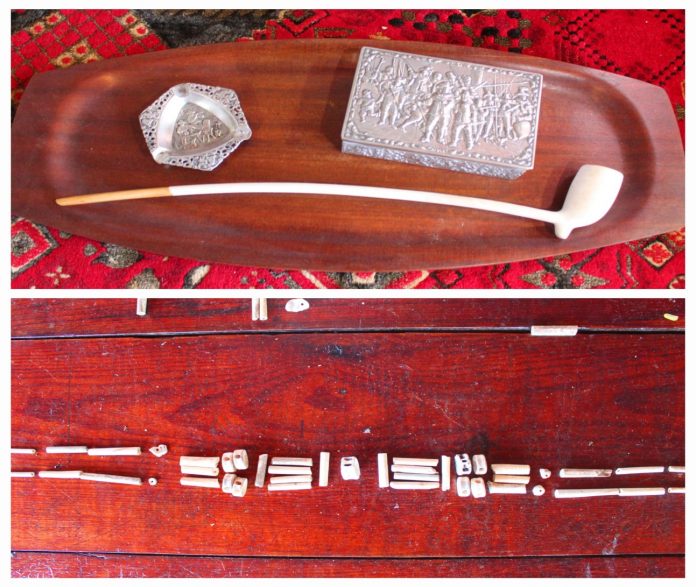Booking a magical glimpse inside Etnia Nativa
Article by Etnia Nativa call us 592 2702 and book your experience!
Every week, Etnia Nativa unveils a new episode regarding culture and heritage, focusing on native knowledge, transcendental wisdom, and the importance of defending Aruba’s true identity. Articles that connect the reader with a mystical aspect of the island, its culture, and its traditional heritage encourage all to interact with the native environment by adopting an authentic island state of consciousness.

In this episode, we share some details about the origin of small white cylindrical fragments found during archaeological expeditions in different parts of our island. If you are an earth explorer, you will encounter many kinds of objects of white or pale coloration. Some were made out of fish bones, shells, and old porcelain, and others out of white clay. Some are materials used in the manufacturing of quiripa, shell buttons with one or more holes used for bodily ornamentation, found during archaeological excavations of major settlements like Savaneta, Sta. Cruz, and Tanki Flip belonging to the Ceramic Period. These found fragments allow archaeologists to date or place the site at a certain epoch or period.
Some other small artifacts, such as white perforated cylindrical tubes, were also found in many places around the island. These are a testimony to activities belonging to another period in our island history. These pieces belong to an artifact sought by many in those days who wanted to show off their status. These were shreds and broken pieces that once formed part of the so-called Gouda pipes, a commercial indication of the Dutch colonial era. The white ceramic tobacco pipes, also known as “Dutch pipes,” were kind of fragile and used to get clogged with Tabaco, consequently being discarded in frequented places on our island. These pipes were mainly used for the smoking of dry tobacco leaves. They reached the Caribbean from the 17th century onward. The manufacturing took place in the Dutch city of Gouda, which became one of the important production centers. Remnants of pipes produced there can be found all over the world. The peculiar thing was that the first pipes of these kinds were brought to the Netherlands from England in the early 17th century by religious refugees, soldiers of fortune, and craftsmen. The first known reference to pipe making in the Netherlands dates back to 1611, when an English pipe maker in Amsterdam took legal action against another pipe maker. Many clay pipes have a maker’s mark that can not only provide the exact date of manufacture of the pipe but also its origin. The Dutch name is “pijpaarde,” which means pipe earth and stands for a type of white pipe firing clay of the sort that is used to make tobacco smoking pipes and which tends to be treated as disposable objects.
The raw material with which they were first made was found in specific places, in the River Thames upstream from London. However, in Holland, they used white clay from deposits found in the Rhine and Maas rivers.
The remains of these pipes have promoted avenues of archaeological research on both sides of the Atlantic Ocean. Focusing on the maker’s marks or a symbol attached to the product, the practice of pipe marking probably coincided with the establishment of the London tobacco pipe guild in 1619. Archaeologists analyze the style and shape of the bowl, the diameter of the pipe hole stem, the style and location of the brand itself, and the place of manufacture. Pieces of these pipes can maybe still be found in places like Alto Vista, Wela, Balashi, etc.
Pipe makers’ marks appear in a variety of places on the bowl and were produced by molds that left included, negative, or raised impressions. In the first half of the 17th century, the markings usually appeared on the flat base of the heel on Dutch pipes.
A peculiar thing is that our natives used these broken pieces to make chokers and other body-decorating artifacts.
To learn all about Aruba, book a visit to Etnia Nativa, a unique native gem!
Through this platform, Etnia Nativa shares the most interesting and revealing stories about Aruba as an undiscovered tourist destination, and if you are interested in getting to know the island beyond the beaches and its deep heritage, book a visit to its magnificent private building that integrates natural and reused materials and is full of art, culture, and island heritage, where each visitor is guided through a private encounter with the owner-builder and cultural expert. WhatsApp +297 592 2702 etnianativa03@gmail.com
















